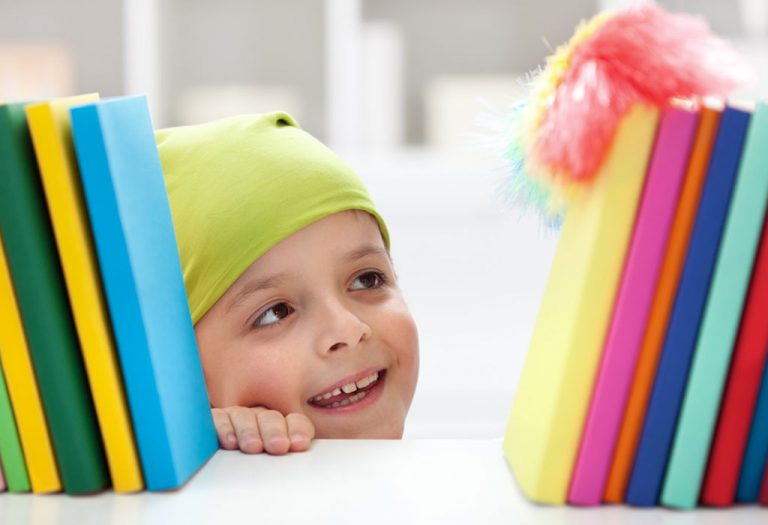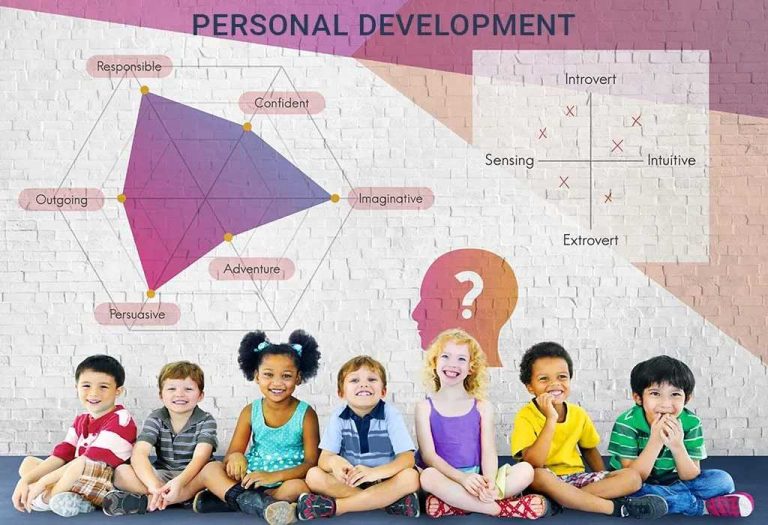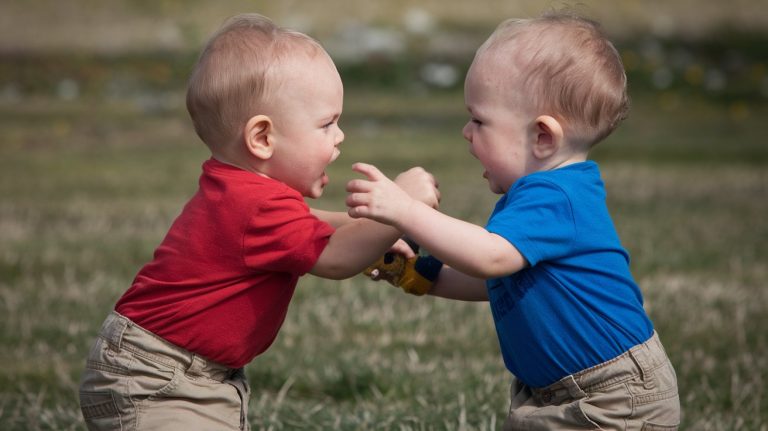Positive Reinforcement vs Positive Punishment – Which Is Effective?
Kids can certainly be a handful. Every parent knows that although their kids might be the greatest blessing of their lives, at some point or another, their patience has been tested to the limit. And that is completely okay because kids learn as they grow, and parents grow into the role of great parents only by trial and error since it is also their first time. However, kids must be taught from a young age that their actions have consequences and cannot be left unchecked.
For many parents, the question is whether to use the carrot and stick method or if there are other methods that can help their children grow into mindful adults. Parents can also consider the possibilities of positive reinforcement and positive punishment for their children’s actions. Read our article to find out what is the difference between positive reinforcement and positive punishment.
What Is Positive Punishment?
Positive punishment is a method of behaviour modification. However, the term positive does not refer to something pleasant in this case. It is just a method of reprimanding wherein you make the child understand that their actions will have consequences, and this explanation helps to bring about a positive behaviour modification (1). Having said that, it is not a hard and fast rule, as each circumstance will require a different approach. Parents must guide their children towards alternate behaviour as well, in order to cope with the situation.
How Does it Work?
Positive punishment is when you add a certain consequence or element to the environment in order to dissuade your child from a certain type of behaviour. The idea of positive punishment is to reduce or minimise the likelihood of a certain, unwanted behaviour (2).
Examples of Positive Punishment
Positive punishment depends on what is aversive, because that concept changes from one child to another. Parents must decide the apt way to deal with certain situations, so that they are valuable teaching moments. Here are some examples of positive punishment so that you can have a better understanding of it and how it works.
1. Scolding
It is safe to say that most kids around the planet would not like to get scolded, and will avoid putting themselves in a situation where they get scolded. They understand that certain actions lead to them getting reprimanded or lectured, so they will tend to avoid it in the future. This is one of the most common methods of positive punishment that is used the world over.
2. Writing
This is a positive punishment method that is utilised in a lot of schools. A child can be made to write something over and over, or even write an essay on the unwarranted behaviour. Children usually realise that it is a waste of their time, which could be spent elsewhere, and it will help to avoid the specific behaviour in the future.
3. Grabbing or Hand Slapping
This kind of positive punishment usually happens in the spur of the moment. Parents might find themselves lightly slapping the hand of a child trying to reach a pot of boiling water or forcefully grabbing your child’s arm if you find him running into traffic or other potential danger. Humans do not like to get manhandled, and this might deter your child from engaging in unwarranted behaviour.
4. Chores
Not just kids, even adults dislike chores, but adults understand that there is no way around them. However, chores are a great way to deter children from indulging in unwanted behaviour. If a child smears peanut butter on the couch or carpet, he can be made to clean it or perform other household chores.
5. Rules
Much like the previous example, a very few number of humans actively want more rules. Adding more rules in the house for a child that is misbehaving is a good way to incentivise him to change his behaviour.
Pros of Positive Punishment
Let’s take a look at some of the advantages of positive punishment.
- Positive punishment works well when it has been executed promptly and consistently.
- The child is sufficiently informed that his behaviour is unacceptable and subsequently knows not to repeat it in the future.
- Once the child has been given a negative consequence, it teaches him that his behaviour has consequences and therefore deters him from repeating it in the future.
- The child is provided with a good reason to behave properly in the future and must also be given an opportunity to prove himself.
Cons of Positive Punishment
Let’s take a look at some of the drawbacks of positive punishment.
- Positive punishment can lead to aggressive behaviour in children. Spanking a child can also lead to him defying his parents more, which, in the long run, can be a big problem for his development as well as the people around him.
- A review of a 2016 study shows that spanking can contribute to mental health and cognitive issues.
- It teaches avoidance behaviour, and not replacement behaviour. Positive punishment is the least preferred method to teach kids, because it is tough to generalise it. However, it is efficient when safety is what is being taught.
- Kids are clever and will tend to find a loophole. If they notice that parents are becoming very controlling, they will also find alternative inappropriate behaviours just to get under their skin.
What Is Positive Reinforcement?
Let’s switch gears, and take a look at positive reinforcement for a few minutes. Making sure that your child receives something positive in order to teach him a lesson is not always a bad thing. It is known as operant conditioning, and relies on a system of rewards in order to change certain behaviours (3).
How Is it Different From Positive Punishment?
Both methods of behaviour changing differ from each other in that reinforcement is used in order to encourage good behaviour, whereas positive punishment relies on negative consequences in order to discourage undesired behaviour (2).
Types
There are different kinds of reinforcements that can be used in order to increase a certain kind of behaviour. However, these reinforcements need to be changed and modified, depending on the situation at hand.
1. Natural Reinforcement
These happen as a result of good behaviour. No intervention is required, and good behaviour is automatically rewarded. A good example is a student studying hard and doing well in tests, due to which he gets good grades.
2. Tangible Reinforcement
Physical rewards such as candy, toys, treats, money, etc. can be provided to a child in order to encourage a certain type of behaviour. Although this method can be a powerful motivator, it should be used cautiously.
3. Social Reinforcement
This includes expressing approval for a certain kind of behaviour, and it can come from any authority figure in the child’s life, be it parents, teachers, or even friends.
4. Token Reinforcements
Parents can start a token system, wherein the child receives a token for each time that he displays a behaviour that is appreciated. These tokens can later be redeemed for something of value.
How Does it Work?
Positive reinforcement for kids works in a way where they are motivated to continue a certain positive behaviour due to the reinforcement provided to them. A behaviour, which might have otherwise gone unnoticed, strikes the child as something that is appreciated, and they continue with the same behaviour because there is something for him in return.
Examples of Positive Reinforcement
Here are some examples of positive reinforcement so that you can have a better understanding of it and how it works.
1. Allowances
After tidying up their room and finishing their homework, kids can get an allowance or a treat.
2. Encouraging Words
If your child does well in a test, saying “good job!” is a great way to motivate him to perform similarly next time.
3. Natural Reinforcement
A girl brushes her hair in the morning before going to school, and once she is there, she receives multiple compliments about how her hair looks good and neat, and this motivates her to continue the behaviour.
Cons of Positive Reinforcement
As with most aspects of life, positive reinforcement, too, has some disadvantages.
- Being too positive with a child can lead to him being entitled in his adulthood, which can be dangerous, as reality is much different from the controlled environment that he has grown up in.
- Feeling the sense of self-importance is destructive, when it is present without having earned it. It can lead to being delusional.
- The reinforcement must be executed within a short span of time. If too much time elapses between the behaviour and reward, it will have little effect.
When and How to Implement It?
It can be a tricky situation, to decide when to apply positive reinforcement or any other kind of behaviour changing method. Here are some tips on when and how to implement it.
1. Tangible vs. Non-Tangible
There can be a problem with intrinsic motivation when it comes to rewards being tangible, and to tackle this, non-tangible reinforcements are preferred, such as using praise to encourage a certain behaviour.
2. Constructive Criticism
Making sure that the child receives some sort of feedback is also important. Parents should not stop at “good job!”. Instead, give praise in the form of a statement. Example: “Thank you very much! You did a great job with cleaning up your room!”
3. Restrict it to Positive behaviour
When a child misbehaves, parents should not execute any sort of positive reinforcement, because it might encourage the child to repeat the behaviour. Make sure you restrict the praise and rewards only for positive behaviour.
4. Reinforce Immediately After the behaviour
Parents must make sure that not too much time passes after the behaviour before they provide the positive or negative reinforcement. It must be done immediately after to have maximum effectiveness.
5. Praise for Quality, Not Outcome
The child must be provided praise not just because he has completed a task, but for the entire action and the way in which he has done something.
Much like anything else, both positive punishment and positive reinforcement have their pros and cons. It’s important for parents to understand the situation or behaviour before deciding what action to take. The choice between positive punishment vs positive reinforcement comes down to whether you want to stop bad behaviour with consequences or encourage good behaviour with rewards. Neither method works perfectly on its own, but when used together along with other behaviour strategies, they can help build a child’s character effectively.
FAQs
1. Which is more effective for long-term behaviour change: positive reinforcement or positive punishment?
Positive reinforcement is generally more effective long-term because it builds motivation, self-esteem, and a desire to behave well (3). Punishment may stop behaviour temporarily but often leads to fear, resentment, or avoidance.
2. Can both methods be used together?
Yes, many behaviour experts suggest a balanced approach, minimising punishment while emphasising reinforcement. If punishment is used, it should be consistent, fair, and followed by guidance on correct behaviour.
3. What are common mistakes when using these methods?
With reinforcement, overusing rewards or being inconsistent can weaken the effect. With punishment, being too harsh or vague can damage trust and cause confusion.
Teaching kids to be mindful, respectful, empathetic, trust-worthy, self-reliant, patient, and other positive qualities takes time and effort, as they are learning not only about the environment around them, but also themselves as they grow up. Make sure not to be too hard on your kids, but also set boundaries, so that they do not grow up to be entitled. The real world, unfortunately, is different and brutal compared to what we try to teach our kids in their childhood, and instilling certain qualities is imperative for their growth and well-being. All the best to you!
References/Resources:
1. University of Central Florida – REINFORCEMENT AND PUNISHMENT
2. PubMed – Behavior Modification
3. Palo Alto University – Reinforcement and Punishment
Also Read:
Basic Life Skills for Children
Working Tips to Discipline Kids for Swearing
Negative Discipline Techniques Parents Should Never Use
Positive Discipline Techniques That Work Well for Kids
Was This Article Helpful?
Parenting is a huge responsibility, for you as a caregiver, but also for us as a parenting content platform. We understand that and take our responsibility of creating credible content seriously. FirstCry Parenting articles are written and published only after extensive research using factually sound references to deliver quality content that is accurate, validated by experts, and completely reliable. To understand how we go about creating content that is credible, read our editorial policy here.






















